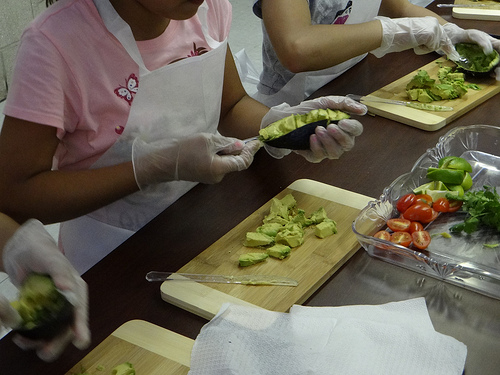Gastric Bypass Tool Patient Growth Stages
Weight Loss Surgery (WLS) is referred to in bariatric medicine as a 'tool?, only a tool to help morbidly obese regain health through massive weight loss. What is seldom mentioned is that ?Tool? causes patients to experience four phases of growth: Conception, Infancy, Adolescence and Maturity. Along the road through those four phases are lots of bumps and bruises, but also many celebrations and successes.
Conception begins when patients consider surgery as a treatment for morbid obesity. They may need to lose weight for health reasons, to restore quality of life or improve diminished self-esteem.
Conception is followed by birth, an event conducted by the surgeon who partitions off most of the stomach creating a pocket or pouch that will hold one ounce of food. In most gastric bypass procedures the digestive system is re-routed to bypass the intestine and shortcut to the bowel. This prevents too many calories from being absorbed and stored by the body in the form of fat. The patient wakes from the surgery a bariatric infant.
Infancy begins when the patient wakes from the anesthesia with a stomach the size of a tablespoon. Everything is completely foreign to the behaviors and habits that caused obesity. There is not one single thing an obese person has done in the past that they can continue doing. Infancy is the time of rapid weight loss. For the first time most morbidly obese patients are consistently losing lots of weight, something they have never experienced before. Infancy for most bariatric patients lasts from nine to 18 months.
Adolescence is the stage when patients tend to fight the tool. Many patients don't dump, vomit, snack or eat the forbidden foods until they reach adolescence. But once they approach or reach target weight they take chances and break the rules. Perhaps they eat sugar which results in a blood sugar imbalance called 'dumping? or they may stuff themselves with starchy carbs causing vomiting. In the worst case, a patient returns to snacking, a little treat of hard candy here and a handful of popcorn there. This is when patients report weight regain, panic and self-loathing.
The good news: the duration of adolescence is up to the patient. A patient only hurts themselves when they break the rules. Successful WLS patients commit to themselves early to be in control of their own gastric bypass growth cycle.
Maturity At maturity a patient understands the gastric bypass system and is living the life they dreamed. They have achieved desired weight loss and maintaining a healthy weight and have stopped fighting the gastric bypass. I believe WLS maturity is reached when patients understand one word: respect. Respect for the tiny tummy, respect for the science of the body, and respect for oneself. Sure, we all experience an occasional lapse of judgment; that old lover of ours ? food - is flaunting temptations every single day. But the gastric bypass patient is a brave and resilient person.
Successful patients build on infant and teenage experiences and become an adult embracing all the good things gastric bypass has facilitated. The battle against obesity isn't easy and it never ends. Patients will fight old habits for the rest of their life. Gastric bypass is a tool, a weapon in the battle against obesity, but it is the patient who wins the war.
-
Black stool causes, symptoms, and treatments
Black stool can result from dietary changes to even revealing a
-
What Is The Best Way To Burn Belly Fat?
If you have been struggling to get a fla
-
Lose More Weight - 8 Quick Tips
Obesity is known to increase health risk
-
Decrease Your Stomach Fat And Display Your Incredible Hard Six Pack Abs
Have you noticed that almost all individuals will never fail to contai
-
Diagnosed With a Herniated Disc? Get the facts on what really causes it and how to get relief
What is a herniated disc?Youve probably heard people say they have
-
Fat Buring Foods - Eat These Foods To Help You Lose Weight Fast!
Are there foods to eat that actually bur
- DON'T MISS
- The Best Diet Plan : Is Your Exercise Routine Actually Making You Fat ?
- Will Using a Food Tracker Help Me Lose Weight?
- Fitness Program: Interval Training
- Commanding The Subconscious Mind To Do Your Bidding
- The Secret Of Weight Loss Water
- The Truth About Weight Gain -2
- How to implement healthy diet for your body shape?
- Book Review: The Volumetrics Eating Plan
- Lose Your Belly Fat - Simple But Effective Tips
- Stay Away from Obesity with These Handy Suggestions




